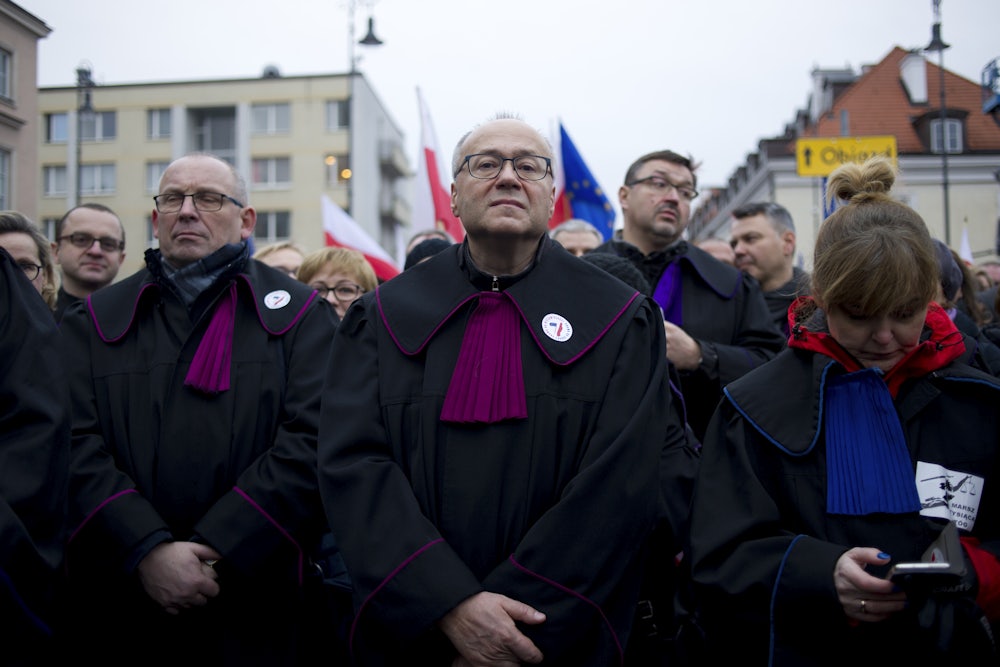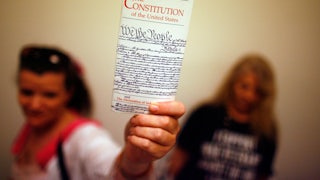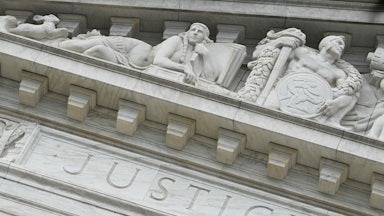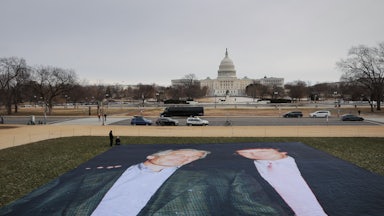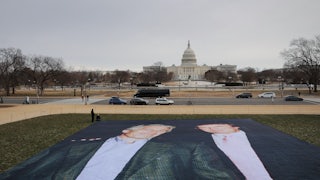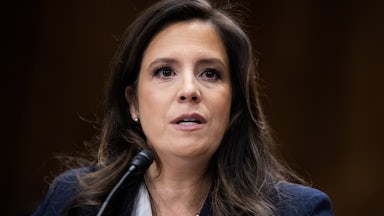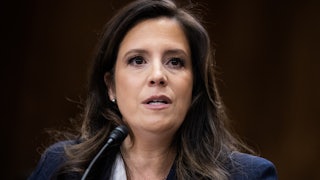When democracies fall to authoritarianism, it is often the press, or students, or unions that first rise in protest. This has certainly been the case as Donald Trump has grabbed every lever of power since his last inauguration. But international history suggests that another—perhaps unexpected—group can serve as a democratic vanguard: the lawyers. From Islamabad to Warsaw, when executive power has turned against constitutional order, the people in black robes and stiff collars have sometimes been the ones to say no—and to say it in public, in their professional capacity, with the authority that comes from representing the law itself.
The United States may soon be entering one of those moments. The People’s Parity Project, or PPP, a network of progressive lawyers and law students, is kicking off a nationwide “Lawyers March for Democracy” on November 15, backed by Alliance for Justice, the American Constitution Society, Lambda Legal, Project South, Law Students for Climate Accountability, and many other organizations. The march is intended to protest the authoritarianism of the Trump administration and the Supreme Court’s complicity in enabling it. But the event is also meant to spark something larger: a sustained, national mobilization of legal professionals willing to confront democratic backsliding head-on.
The idea may sound novel to American ears. Lawyers here have rarely seen themselves as a collective political force, and judges usually avoid anything resembling political protest. Yet in other countries, when institutions began to crumble, it was precisely these lawyers and judges who stepped into the breach. Two examples—Pakistan and Poland—offer both inspiration and a roadmap for what a legal profession movement might look like in the United States.
In March 2007, Pakistan’s president and army chief, Pervez Musharraf, suspended the country’s chief justice, Iftikhar Muhammad Chaudhry, in what many saw as an overt bid to silence judicial independence. Within days, the lawyers of Pakistan—federal and provincial bar associations, senior advocates, and newer practitioners—turned their collective outrage into a full-fledged political movement. Clad in their black coats, they marched through the streets of Islamabad and Lahore, chanting for the restoration of the judiciary. They boycotted courts, organized long marches stretching hundreds of miles, and refused to lend the legal system a veneer of legitimacy while it was being dismantled from above.
The Musharraf regime responded with characteristic force: Lawyers were beaten, arrested, tear-gassed, and detained. Yet the movement did not waver. What began as a demonstration against a single suspension became a mass civic campaign, drawing in journalists, students, and ordinary citizens. All of it was buoyed by the belief in the country’s constitution and its protections for its people. By 2009, under mounting pressure, the government reinstated Chaudhry and several other judges, and the military ruler’s political authority collapsed.
Pakistan’s lawyers had accomplished something extraordinary. They transformed professional legal identity, which had most often been a symbol of elite detachment and investment in the status quo, into a weapon of collective resistance. Their insistence on standing as lawyers, not as partisans, lent moral legitimacy to the cause. They used the symbols of their profession—the black coats, the bar associations, the language of constitutionalism and the rule of law—as tools of protest. They showed that defending the rule of law could itself be a radical act.
A decade later, in a very different context, Polish judges and lawyers found themselves fighting a similar battle. When the Law and Justice Party, or PiS, came to power in 2015, it launched a series of “judicial reforms” that critics say were designed to bring courts under political control by lowering the retirement age of judges, packing the Supreme Court with loyalists, and creating a disciplinary chamber that could punish judges for disfavored rulings.
Rather than quietly acquiesce, the Polish judiciary rebelled. In January 2020, thousands of judges and lawyers—many wearing their judicial robes—walked out of their courtrooms and marched through Warsaw in what became known as the “Thousand Robes March.” Judges carried signs reading “The right to independence” and “The right to Europe,” invoking both national sovereignty and European legal norms. “Without free courts there are no free citizens,” one judge declared to the crowd.
It was an astonishing sight: the guardians of legal decorum walking out of the courthouse and into the streets. Polish judges knew that staying silent would mean the slow death of the judiciary as an independent institution. Their decision to make their struggle visible—through robes, through spectacle, through appeals to professional duty—made it harder for the government to claim the mantle of legality. No “reasonable” pundit could explain away a walkout by sitting judges. The march became an image of resistance that traveled far beyond Poland’s borders.
The lessons from Pakistan and Poland are strikingly similar. Both movements began when authoritarian leaders sought to transform the judiciary into an instrument of power. Both authoritarian governments sought to bend the judiciary toward their own ends and ran up against the humanity of the people who actually make the judiciary work. And they were ultimately taken down in part by the legal professionals willing to say that their countries were nations of laws rather than men.
For American lawyers watching their own institutions falter, these stories suggest a path forward. PPP’s upcoming rally aims to do more than express outrage. Turning out large numbers of relatively privileged people like lawyers could always have an impact, and it can go a long way toward changing the narrative around Trump’s authoritarianism and the Supreme Court’s complicity in letting him run wild. But organizers are trying to build infrastructure: networks of lawyers and law students who can translate professional frustration into sustained action. The event will connect participants with long-term organizing projects—local chapters, advocacy campaigns, and efforts to reform the legal system’s internal hierarchies. It’s not just about one march, but about reimagining what collective action within the profession could mean.
If Pakistan’s lawyers proved that even a profession defined by hierarchy can act collectively, and if Poland’s judges demonstrated the power of visibility, then American lawyers face a different challenge: complacency. Many in the legal field see themselves as neutral technicians, guardians of process rather than participants in politics. Yet as the courts themselves become more explicitly political by entrenching minority rule, eroding voting rights, and shielding authoritarian tendencies, neutrality can amount to complicity.
The paradox of the American bar is that it prides itself on upholding the rule of law, but too often leaves “law” to mean whatever those in power say it means. PPP’s rally invites lawyers to reclaim, and reimagine, that terrain. By showing up, publicly and as professionals, they can signal that the law is not an abstraction but a living commitment to democracy.
In Pakistan, a lawyer’s black coat became a symbol of defiance. In Poland, the judges’ robes turned into flags of protest. In the United States, perhaps the simple act of lawyers marching together, explicitly as agents of the law, can begin to shift what it means to be a lawyer in an age of democratic crisis.
The stakes could not be clearer. If the courts are to remain a safeguard for all rather than a weapon for a despotic president, those who work within them must be willing to defend their independence—not just in briefs and law reviews, but out in the streets as well, where they will be visible to all. As the People’s Parity Project and its allies prepare for November’s Lawyers March for Democracy, they are betting on a simple but radical idea: that the legal profession itself can become a movement.
When the lawyers take to the streets, history suggests, change is possible. The question now is whether enough American lawyers are willing to follow that example—and whether they can find in their own black robes the courage that their colleagues in Pakistan and Poland once found in theirs. The Lawyers March for Democracy kicks off on November 15 at 1 p.m., outside of the U.S. Supreme Court, and will only grow from there. Which side will you choose?
